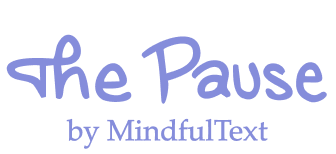
Key Points
- Text message learning is gaining popularity as a key mobile education method.
- Spaced learning involves repeating new information with short breaks between sessions and helps activate brain processes that build and maintain long-term memories.
- Deliver short and concise pieces of information to learners at specific intervals to improve long-term memory recall.
- Provide a more focused and controlled learning experience in conjunction with video-based or in-person learning and further immerse learners into experiences.
An Effective Alternative
This method of learning involves the use of mobile phones to deliver educational content. Also known as m-learning, this modality is growing in popularity especially among professionals who work in fast-paced environments and are always on the go. Text message learning involves sending short, bite-sized pieces of information to the learner's mobile phone through SMS, WhatsApp, or any other messaging platform.
The Brain-Boosting Benefits of Spaced Learning
Spaced learning is a powerful technique that involves repeating new information with short breaks between sessions. According to BrainFacts, spaced learning activates brain processes that help build and maintain long-term memories. Recent studies have suggested that spaced learning can improve resuscitation skills and knowledge compared to massed learning (cramming). ILCOR conducted a systematic review and found that spaced learning was superior to massed learning for improving resuscitation outcomes. Furthermore, over the last two decades, six specific cognitive strategies, including spaced learning, have garnered significant R&D funding. Rasmussen College highlights the rewards of repetition and how spaced learning can be used to maximize learning outcomes.
Get updates from MindfulText:
How Spaced Learning Works with Text Learning
Text message learning is a perfect fit for spaced learning because it allows for repeated exposure to information at different time intervals. Learners receive short and concise pieces of information that are easy to remember. These messages can be sent at specific intervals, allowing for the repetition required for spaced learning.
It's worth noting that the text message channel is also unique in that it is less distracting and less spammy over learning content through social media channels. Unlike social media platforms like Facebook and Instagram, where users may be bombarded with notifications and advertisements, text message learning provides a focused and controlled learning experience. This can be especially beneficial for learners who may be easily distracted by other notifications or who may feel overwhelmed by the amount of information presented on social media platforms.
A Powerful Integration
When paired with video-based learning or in-person learning, the combined use of text message can further immerse the learner into a learning environment. Reinforcing your existing programs by sending short and spaced messages that are relevant and actionable, text message learning can help learners close the gap between intention and action, and motivate them to apply what they have learned.
Do you have a specific integration with MindfulText you’d like to see? Let us know!Simple Steps to Implement
Step 1: Identify the learning objectives
Step 2: Break down the content into bite-sized pieces of information
Step 3: Develop a schedule for sending messages at specific intervals on a weekly basis
Step 4: Choose a messaging platform
Step 5: Test the program to ensure that it is effective
Step 6: Evaluate the program to identify areas for improvement
Tips for Effective Text Message Learning
- Consistency: Ensure that the messages are sent at regular intervals to reinforce learning.
- Interactivity: Encourage learners to interact with the content by asking questions and providing feedback.
- Engagement: Use engaging and interactive content to keep learners interested.
- Feedback: Provide learners with feedback on their progress to help them stay motivated.
Conclusion
This powerful and effective method of learning that can help to boost memory with spaced learning. This method of learning is convenient, cost-effective, and personalized. By following the steps outlined above, learners can successfully implement text-based learning with spaced learning to improve their retention of information.

